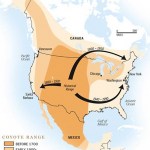Various viruses
As you've probably seen, unless you've been living in a cave, Zika virus is the infectious disease topic du jour. From an obscure virus to the newest scare, interest in the virus has skyrocketed just in the past few weeks:
I have a few pieces already on Zika, so I won't repeat myself here. The first is an introductory primer to the virus, answering the basic questions--what is it, where did it come from, what are its symptoms, why is it concerning? The second focuses on Zika's potential risk to pregnant women, and what is currently being advised for them.
I want to be clear,…
I'm happy to welcome Dr. Heather Lander to the blogosphere and Twitterverse. She's a virologist who has done work with some of the world's deadliest pathogens in a high-security biosafety level 4 laboratory. This is the type of lab where one must wear "space suits" to work with organisms. You've probably seen in dramatized in various movies and TV shows (such as The Walking Dead). Heather describes what it's really like to work in one--even while pregnant.
Dr. Lander, 9 months pregnant in a BSL4 lab
TS: Can you tell readers a bit about your background and…
It's odd to see otherwise pretty rational folks getting nervous about the news that the American Ebola patients are being flown back to the United States for treatment. "What if Ebola gets out?" "What if it infects the doctors/pilots/nurses taking care of them?" "I don't want Ebola in the US!"
Friends, I have news for you: Ebola is *already* in the US.
Ebola is a virus with no vaccine or cure. As such, any scientist who wants to work with the live virus needs to have biosafety level 4 facilities (the highest, most secure labs in existence--abbreviated BSL4) available to them. We have a number…
In the light of the current Ebola outbreak, I thought this post from 2007 was once again highly relevant.
As another Ebola outbreak simmers in Uganda (and appears to be increasing), I recently was in touch with Zoe Young, a water and sanitation expert with Médecins Sans Frontières (MSF*, known in the US as Doctors without Borders), who was working in the Democratic Republic of Congo during the DRC Ebola outbreak earlier this fall (and blogging it!)
Regular readers know of my interest in this virus, but I'm obviously geographically removed from any…
Ebola has surfaced again. After a hiatus of over a year without any new identified outbreaks, the virus has reemerged in western Africa, in the first-ever multi-country outbreak of the Zaire strain of Ebola. As of this writing, there have been 122 suspected cases of the disease in Guinea (24 laboratory-confirmed per the WHO) and 80 deaths (66% mortality rate). Most of these cases have been in Guekedou and Macenta in rural Guinea, about 35 miles apart, but what's really concerning is that at least 11 cases have also been identified in Guinea's capital of 2 million people, Conakry.…
Warning: here be spoilers
In many latter-day zombie movies, books, and TV shows, zombie-ism has a biological cause. In 28 Days Later, the infection is caused by the "Rage" virus, which escaped from a lab when animal rights activists break in and release a group of infected chimpanzees. Of course, one of the animals promptly bites one of its "liberators," and the infection spreads rapidly throughout Great Britain. In Zombieland, it's a mutated form of "mad cow" disease. The Crazies, it's the Trixie virus; World War Z, the Solanum virus; Resident Evil, the T virus. I could go on and on.…
Student guest post by Brandon Woods
A Dangerous Paradise
From jungles with jaguars to crystal blue lakes with freshwater sharks, Nicaragua is one of the most beautiful and dangerous countries in Central America. The brilliant biodiversity attracts millions of tourists each year and the looming volcanoes that pepper the landscape can be an exciting yet unsettling sight. However, in reality much of the danger in Nicaragua comes from the risk of infectious diseases. For example, if you’re planning to travel to this tropical paradise anytime soon, the Center for Disease Control (CDC) states that…
Third of five student guest posts by Dana Lowry
In 1911, Peyton Rous first discovered viruses can cause cancer. A chicken with a lump in her breast had been brought to Rous by a farmer. Rous prepared an extract that eliminated bacteria and tumor cells and injected this extract into other chickens—tumors grew. Rous suggested “a minute parasitic organism” was causing the tumor growth, which is now known to be a virus. However, Rous’ discovery remained very controversial, and it wasn’t until 1966 that he was awarded a Nobel Prize for his discovery. Since…
Ebola has long been known to be a zoonotic virus--one which jumps between species. Though it took several decades to find evidence of Ebola virus in bats, these animals had previously been associated with human index cases of Ebola disease have worked in bat-infested warehouses or traveled to caves where bats roost. Non-human primates have also become infected with the virus, sometimes transmitting the virus to humans when killed primates are butchered for food. Ebola has also been suggested to infect dogs and other wild animals. However, livestock are a newer angle to Ebola virus ecology.…
Uganda's latest Ebola outbreak, which I covered back in July, was just officially declared over on October 5th, a mere two weeks ago. Now today there is a report that three are dead from an outbreak of Marburg virus. That makes 4 Ebola outbreaks and now 2 Marburg outbreaks in the country since 2000.
Guest post by Hillary Craddock
Last week a new study regarding Eastern Equine Encephalitis (EEE) was published online (Bingham et.al.). EEE is a mosquito-borne virus that can cause serious, and sometimes deadly, disease in humans and equines. In warmer parts of North America, the virus is spread year-round, but in areas where mosquitoes get killed off in the winter it has been something of a mystery as to how the virus makes it from year to year. Humans and equines are both dead-end hosts, which means that a mosquito can not be infected from biting an infected person or horse. Researchers in…
Rabies is a disease without a public relations firm. In developed countries, human disease is incredibly rare--we see typically one or two deaths from rabies each year. In contrast, lightning is responsible for about 60 deaths each year. However, worldwide, rabies is another matter. Today is World Rabies Day, a reminder that 55,000 people still succumb to this virus every year--most of them in impoverished regions of Africa and Asia. While cases in the U.S. are typically due to wildlife exposure (rabid bats or even beavers or rabid kitten), infected dogs remain the main vector of infection in…
Regular readers don't need to be told that I'm a bit obsessed with zoonotic disease. It's what I study, and it's a big part of what I teach. I run a Center devoted to the investigation of emerging diseases, and the vast majority of all emerging diseases are zoonotic. I have an ongoing series of posts collecting my writings on emerging diseases, and far too many papers in electronic or paper format in my office to count. Why the fascination? Zoonotic diseases have been responsible for many of mankind's great plagues--the Black Death, the 1918 "Spanish" flu pandemic, or more recently, HIV/AIDS…
August, 1976. A new infection was causing panic in Zaire. Hospitals became death zones, as both patients and medical staff succumbed to the disease. Reports of nightmarish symptoms trickled in to scientists in Europe and the US, who sent investigators to determine the cause and stem the epidemic. Concurrently, they would find out, the same thing was happening hundreds of miles to the north in Sudan. In all, 284 would be infected in that country, and another 358 in Zaire--over 600 cases (and almost 500 deaths) due to a mysterious new disease in just a few months' time.
The new agent was Ebola…
Uganda just can't catch a break. They've recently been hit with nodding disease, a mysterious syndrome where children repeatedly nod their heads and undergo serious seizures, typically leading to death. Now they're in the grips of another Ebola outbreak. This will be the fourth time the country has suffered through Ebola since 2000, when the virus was first found in the country:
The first occurred in August of 2000; the first case died in Gulu on the 17th of September. Despite an investigation, doctors were unable to determine where or how she had contracted the disease. Her death was…
I know summer is winding down, but there's still plenty of beach time left and some great books to take along with you. Two giants in the field have recently released memoirs of their respective fights against infectious diseases: William Foege's House on Fire: The Fight to Eradicate Smallpox and Peter Piot's No Time to Lose: A Life in Pursuit of Deadly Viruses.
I'll begin with William Foege. Foege is a native Iowan, an Epidemic Intelligence Service alum, and former director of the Centers for Disease Control and Prevention. His book, as the title suggests, focuses on his role in the fight…
This is the fifteenth of 16 student posts, guest-authored by Cassie Klostermann.
One of the major accomplishments that public health professionals pride themselves in is the reduction of people getting sick or dying from preventable infectious diseases. Unfortunately, these debilitating, historic diseases that health professionals had once thought they had under control are starting to rear their ugly heads once again in the United States (U.S.). One of these diseases that I am referring to is measles. Measles is a highly contagious virus (from the genus Morbillivirus) spread…
This is the twelfth of 16 student posts, guest-authored by Stanley Corbin.
Disease in wildlife is an important concern to the health and safety of humans and domestic animals. The expanding growth of our nation and resultant land use changes with urbanization has resulted in a shrinking habitat and fragmentation for all animals, including humans. The effects of ecological disruption are universally recognized and adversely effects wildlife through multiple mechanisms.
Hand it to the coyote (Canis latrans) for its ability to exist with humans. The resilience of this animal can be…
This is the eleventh of 16 student posts, guest-authored by Ilze Berzins.
When one hears the words “food-borne illness”, what comes to mind? For me, I think of a medium rare, pink, juicy hamburger, or something like potato salad that may be made with mayonnaise containing raw eggs, or maybe a fresh green garden salad sprinkled with sprouts. I am sure we have all heard about outbreaks or recalls surrounding these familiar dishes. And the usual suspects contaminating these food stuffs are often bacteria with familiar names such as E.coli or Salmonella. …
This is the second of 16 student posts, guest-authored by Eileen Ball.
The beauty of dogs and cats as companions is that we don’t have to raise them to go out into the world and be successful. As pet parents we can set the household “rules” according to what works for us and get on with enjoying our pets; hopefully for many years. According 2011-2012 APPA National Pet Owners Survey cats have now surpassed dogs as the most common household pets in the United States. Despite this fact the same survey reports that in 2010 only 30% of US veterinary patients were…




